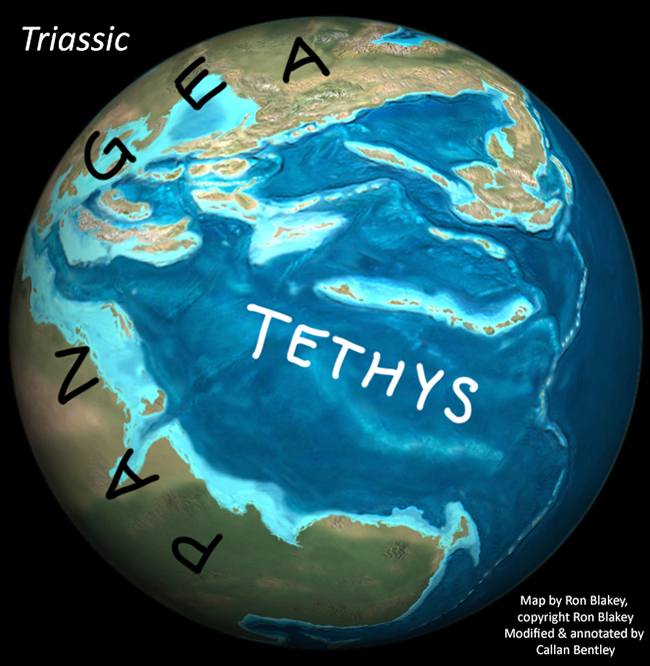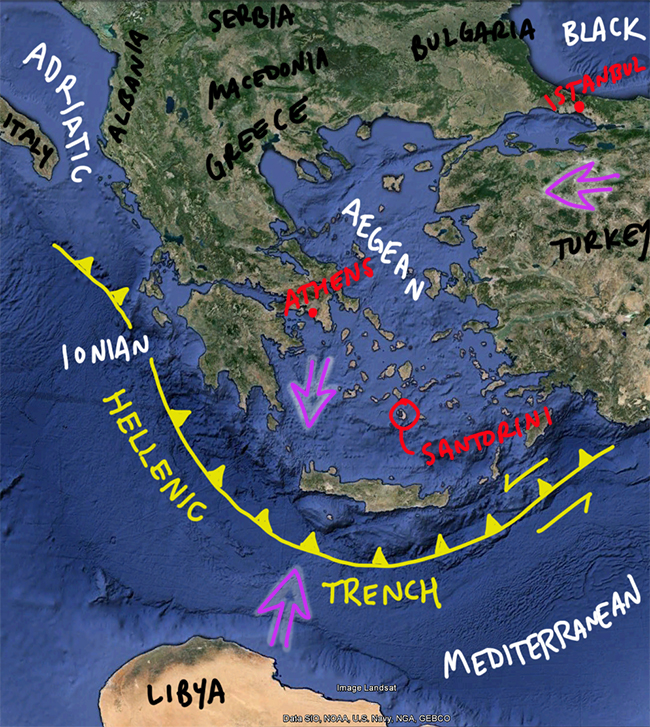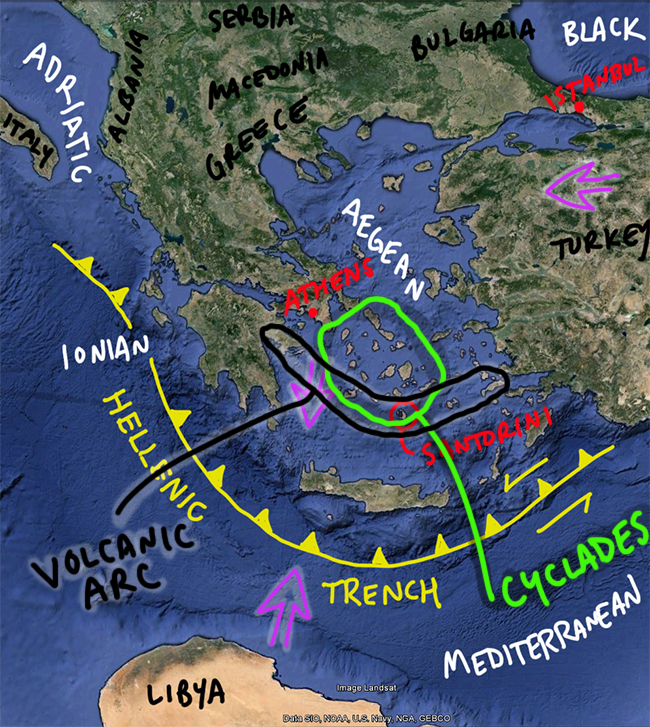Once upon a time, there was an ocean. Its name was Tethys. The Tethys was born in the cozy embrace of Pangea.

But as Pangea broke up, Tethys felt the squeeze. Subduction began to close it.
As subduction recycled the Tethyan oceanic lithosphere, magma was produced and volcanoes erupted. Seafloor and seafloor sediments were dunked into the mantle, experiencing tremendous pressures but relatively low temperatures.
The Tethys shrank in size, hemmed in on all sides by colliding fragments of the former supercontinent. The modern Mediterranean is the “last gasp” of the Tethys. And it’s getting smaller and smaller over geologic time. The subduction continues. One spot where this is gloriously reflected is the island of Santorini.

South of Santorini is the Hellenic Trench, where Africa is being subducted beneath Eurasia. This subduction has been going on for a long time (since Pangea’s breakup in the Triassic), and the most amazing thing about Santorini is that it reflects two different aspects of that subduction story, one ancient, one modern.
You see, Santorini sits in the middle of a geographic Venn diagram: it’s where the modern Hellenic volcanic arc overlaps with the ancient subduction complex of the Cyclades Islands.

The bedrock of the Cyclades tells the earlier chapter of the story: seafloor and overlying sediments that traveled down a subduction zone into the mantle, only to rise again, transformed, to appear at Earth’s surface. The volcanic arc, of course, is a line of modern volcanoes, erupting lava and pyroclastics produced during more recent subduction. And Santorini has both.

Whereas most of the island is famous (and justifiably so) for its volcanic features, I was most interested in the green blotches on the map above – the spots where the Cycladic basement rock was exposed: schist and marble that had a tale of subduction to tell…
As fate would have it, my free trip to Greece with the Fugawies had me staying in Perissa, the stretch of rock in the southeastern part of the island, right in the middle of the two biggest exposures of the basement complex.
Next up: I’ll discuss what I found there…

I can’t help wondering how much “free” cost!
“Help! I’ve been subducted and am being held in the basement on an island!”
the trench is in the wrong location, it should be outboard of the accretionary complex.
I think it’s actually more complicated than (a) I’ve depicted it here and (b) your implication that it’s simply misplaced. Various diagrams show two “trenches” of various orientations. Google image search it to see what I mean.
You know there is no country called “Macedonia” right? Since you are working in Greece, you should respect Greek sensibilities…
Hi Nick,
I was actually unaware of the controversy surrounding the use of this name for “the former Yugoslav Republic of Macedonia,” but thanks for alerting me to it. Interesting!
And I’m not “working” in Greece, so much as simply being a tourist for 6 days. I’ve got the utmost respect for Greek sensibilities; sorry to have inadvertently given offense through my ignorance.
CB
Oh, there are many such overlapping sites between the modern subduction as the Australian-Indian block subducting under the Eurasian block with the ancient Cimmerian Orogeny at the end of the Triassic along southern Sumatra Island of Indonesia.
Love this article! It was very helpful to me for my Marine Bio Lab! Thanks for sharing.